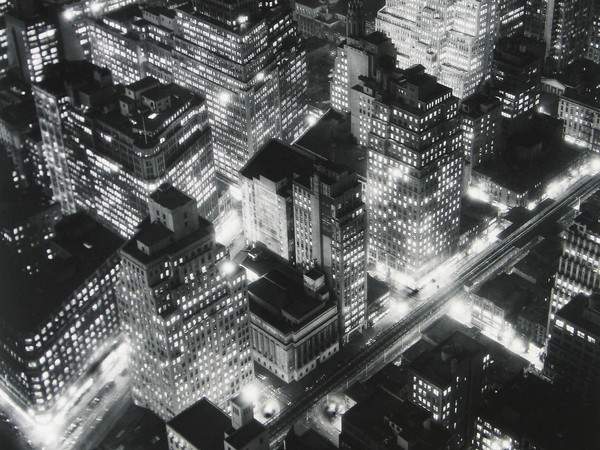Lecco dedicates an exhibition to Berenice Abbott, the New York-based photographer
The Palazzo delle Paure in Lecco hosts from April 20 to September 8, 2019 an exhibition dedicated to Berenice Abbott (Springfield, 1898 - Monson, 1991), one of the most interesting artist figures of the 20th century, considered "the photographer of New York." The exhibition, titled Berenice Abbott. Topographies and curated by Anne Morin and Piero Pozzi, under the patronage of the Municipality of Lecco, produced and realized by Di Chroma Photography and ViDi - Visit Different, presents 80 black-and-white photographs, capable of tracing her entire career, and declined in three sections that define her most characteristic expressive style: Portraits, New York and Science.
“The exhibition of Berenice Abbott,” says Simona Piazza, Councillor for Culture of the Municipality of Lecco, "inaugurates the second year of major exhibitions at Palazzo delle Paure, a unique opportunity for our city to admire the artistic work of Abbott, one of the best-known photographers in the world, with no less than 2775 passages in the most important international auctions since 1962. It is not only an opportunity for the entire area to be able to experience this at home, but also a new opportunity to promote cultural tourism in our city."
The exhibition opens with portraits, taken starting in 1925 inside the Paris studio of Man Ray, whose assistant she was. With these photographs, Berenice Abbott immediately achieved great success, both critically and commercially, to the point that within a year she was able to open her own studio and exhibit her work in galleries. Among her most successful shots are those of writer Solita Solano, photographer Eugène Atget, actress Dorothy Whitney, Jean Cocteau, or again, that of James Joyce.
Returning to the United States in 1929, Berenice Abbott abandoned the portrait theme because of the economic pressures that followed the Great Depression, to devote herself to photographs of New York City, whose changes and growth as a metropolis she documented and which can be described as her most successful work. The very first shots were simply notes, captured with a small camera, only to be translated, in 1932, into large format thanks to his Century Universal camera.
The exhibition continues with the section devoted to science. In 1939, in fact, Abbott began her most ambitious project yet. Believing that scientific phenomena were valid artistic subjects, he set out to prove that photography was the most suitable and qualified medium for combining art and science. She worked for more than two decades in solitude on this project until, in 1958, her work was recognized by the Physical Science Study Committee and she was hired by MIT - Massachusetts Institute of Technology. Ideally closing the show is the documentary Berenice Abbott: A View of the 20th Century by Kay Weaver and Martha Wheelock (1992).
Hours: Tuesday through Friday, 9:30 a.m. to 7 p.m. Saturday, Sunday and holidays, 10 a.m. to 7 p.m. (Last admission one hour before closing). Closed Monday.
Ticket price: full €9, reduced €7 (children 14 to 18, over 65, preconstituted groups of adults over 15), Schools €5, Children (6 years to 13 years) €5. Free: Abbonamento Musei Lombardia Milano holders, journalists, accompanying adult groups (one per group), accompanying school groups (two per group), children up to 5 years of age, disabled visitors with disabilities over 74 percent, accompanying disabled visitor (only in case of non-self-sufficiency).
Pictured: Berenice Abbott, Nightview, New York (1932)
Source: release
 |
| Lecco dedicates an exhibition to Berenice Abbott, the New York-based photographer |
Warning: the translation into English of the original Italian article was created using automatic tools. We undertake to review all articles, but we do not guarantee the total absence of inaccuracies in the translation due to the program. You can find the original by clicking on the ITA button. If you find any mistake,please contact us.



























